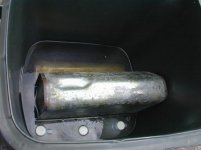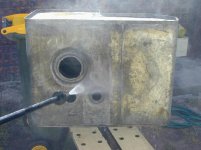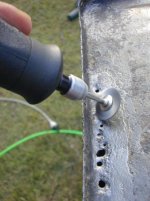harry
Experienced Member
Some pictures of a recent find, and with some careful work and a "little" luck ! and hopefully help from some of you guys, I could end up with a working 8/E, just a pile of bits and tin at present,but most everything seems there. Included but not shown are a set of boards, and core memory, luckily with the top bridge jumper blocks! I have an 8/m which I can test /check out the boards that came with this stuff.
There is an interesting item that came with it.. a hardware breakpoint module and board, model 110B I have not searched for info on this yet.
For now...first on the list, some primer and black paint I quess!
I will try and keep an account of my progress, and pitfalls..........Harry
There is an interesting item that came with it.. a hardware breakpoint module and board, model 110B I have not searched for info on this yet.
For now...first on the list, some primer and black paint I quess!
I will try and keep an account of my progress, and pitfalls..........Harry








